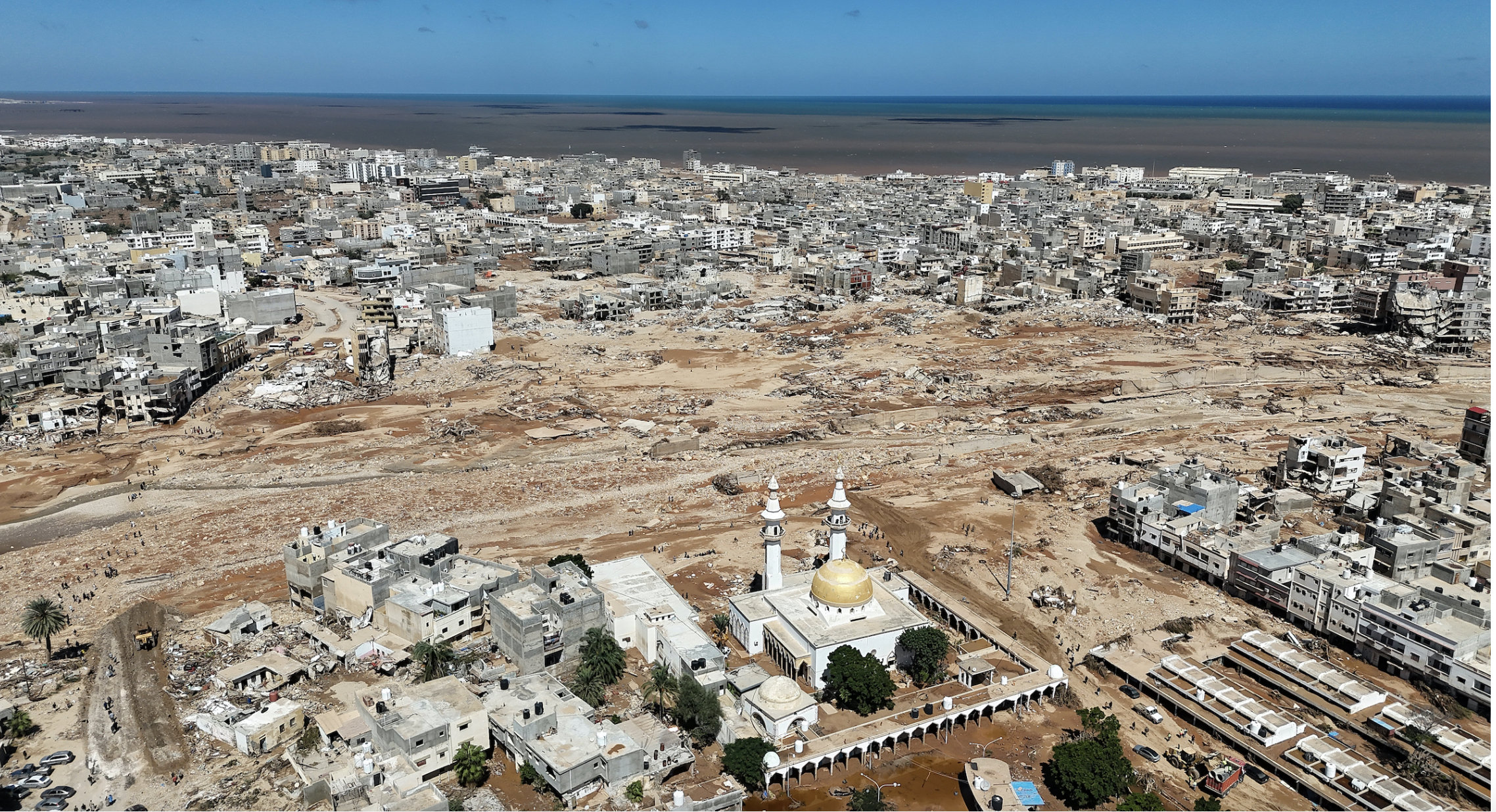After the Mediterranean cyclone Storm Daniel made landfall in Northeast Libya on September 10, torrential rainfall and heavy winds from the inclement weather collapsed two dams, resulting in a surge of deadly floods that inundated cities and villages lining the country’s coastline such as Benghazi, Bayda, and al-Marj. As reports continue to emerge from the country, the port city of Derna appears to have suffered the worst effects of the devastation.
Prior to this week’s catastrophe, which flooded the Wadi Derna river that bisects the city, Derna was home to at least 90,000 residents. As of today, September 13, officials have reported that the death toll in the city has risen to over 5,000 and as high as 20,000 by some estimates, alongside an approximate 10,000 missing residents and thousands more displaced, as search teams scramble to find survivors among the collapsed infrastructure. Amid the mounting deaths and missing individuals in Derna, witnesses have reported the loss of entire neighborhoods and the destruction of at least five bridges.
At the cross-section of Roman, Byzantine, and Islamic cultural influences, Derna is home to artifacts and sites dating back to the Hellenistic period. Located between mountains, desert, and the Mediterranean Sea, the city was founded in the 15th century on the site of the Ancient Greek colony Darnis, and has since become known for its historic center housing a mosque, church, synagogue, and public bazaars known as souqs in Arabic.
One local official estimated that at least a quarter of the entire city has completely vanished, according to NBC. Facebook photos and satellite images illustrate the flood’s destructive toll on the city, where the Al Sahaba Mosque remains standing among the remnants of what used to be thousands of residences, schools, offices, stores, and vehicles. Images posted by Libyan television network Almostakbal, per Al Jazeera, further detail the damage left behind, showing a collapsed road between seaside towns Susa and Shahat, home to the UNESCO-protected ruins of Cyrene, an Ancient Greek colony that later expanded into a Roman city. Hyperallergic has contacted the Libyan Embassy in Washington, DC, UNESCO, and the World Monument Fund for more information.
Prior to the floods, officials around the world had already raised concerns about the vulnerability of Libyan cultural heritage and archaeological sites since war broke out after the fall of Muammar Gaddafi in 2011, and divided the country’s east and west. In 2015, Newsweek reported that the expansion of the jihadist Islamic State in Libya’s coastal cities including Derna, Tripoli, Benghazi, and Sirte posed not only a threat to the country’s residents, but also to its culturally significant spaces, given the group’s history of attacks on ancient treasures and looting of cultural sites. In 2016, the World Heritage Committee placed five archaeological sites, which included the ruins of Cyrene, on its List of World Heritage in Danger in response to the damage incurred from years of armed conflict and political instability.







